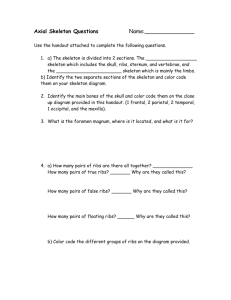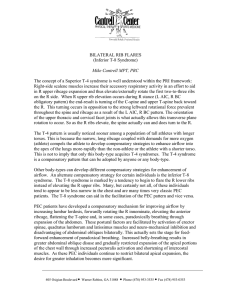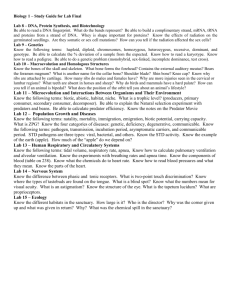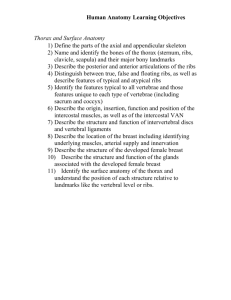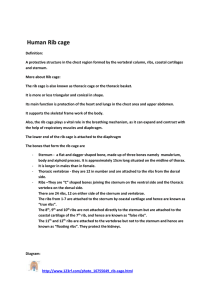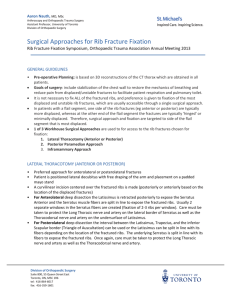Part 1 - Hudson Boat Works
advertisement
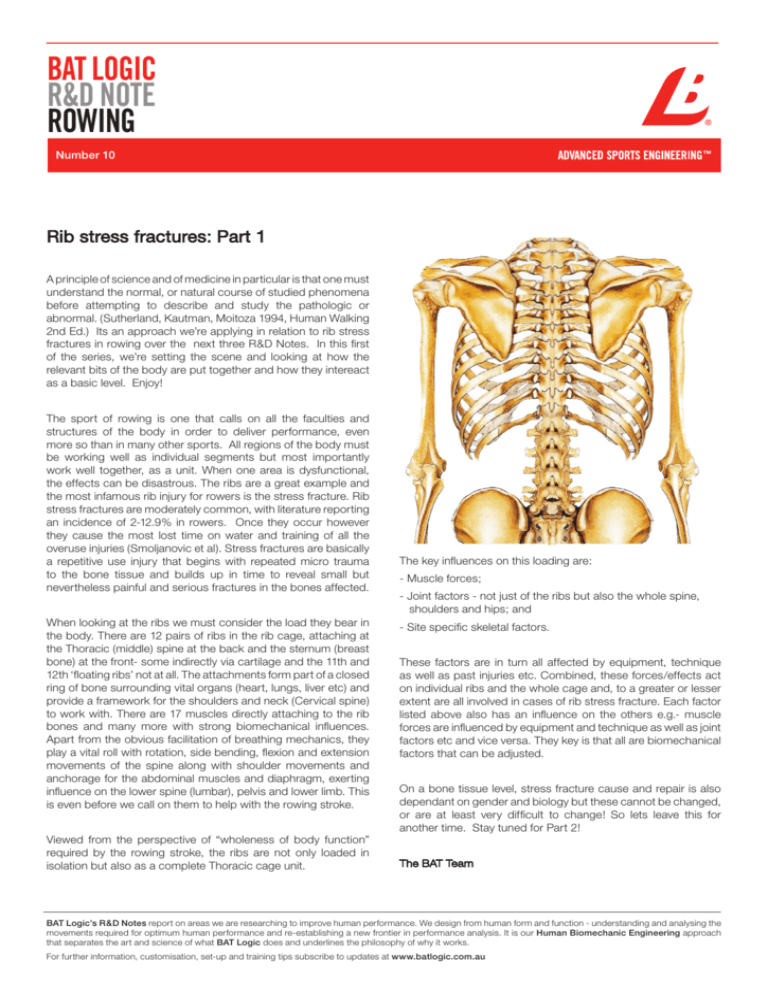
BAT LOGIC R&D NOTE ROWING Number 10 Rib stress fractures: Part 1 A principle of science and of medicine in particular is that one must understand the normal, or natural course of studied phenomena before attempting to describe and study the pathologic or abnormal. (Sutherland, Kautman, Moitoza 1994, Human Walking 2nd Ed.) Its an approach we’re applying in relation to rib stress fractures in rowing over the next three R&D Notes. In this first of the series, we’re setting the scene and looking at how the relevant bits of the body are put together and how they intereact as a basic level. Enjoy! The sport of rowing is one that calls on all the faculties and structures of the body in order to deliver performance, even more so than in many other sports. All regions of the body must be working well as individual segments but most importantly work well together, as a unit. When one area is dysfunctional, the effects can be disastrous. The ribs are a great example and the most infamous rib injury for rowers is the stress fracture. Rib stress fractures are moderately common, with literature reporting an incidence of 2-12.9% in rowers. Once they occur however they cause the most lost time on water and training of all the overuse injuries (Smoljanovic et al). Stress fractures are basically a repetitive use injury that begins with repeated micro trauma to the bone tissue and builds up in time to reveal small but nevertheless painful and serious fractures in the bones affected. When looking at the ribs we must consider the load they bear in the body. There are 12 pairs of ribs in the rib cage, attaching at the Thoracic (middle) spine at the back and the sternum (breast bone) at the front- some indirectly via cartilage and the 11th and 12th ‘floating ribs’ not at all. The attachments form part of a closed ring of bone surrounding vital organs (heart, lungs, liver etc) and provide a framework for the shoulders and neck (Cervical spine) to work with. There are 17 muscles directly attaching to the rib bones and many more with strong biomechanical influences. Apart from the obvious facilitation of breathing mechanics, they play a vital roll with rotation, side bending, flexion and extension movements of the spine along with shoulder movements and anchorage for the abdominal muscles and diaphragm, exerting influence on the lower spine (lumbar), pelvis and lower limb. This is even before we call on them to help with the rowing stroke. Viewed from the perspective of “wholeness of body function” required by the rowing stroke, the ribs are not only loaded in isolation but also as a complete Thoracic cage unit. The key influences on this loading are: - Muscle forces; - Joint factors - not just of the ribs but also the whole spine, shoulders and hips; and - Site specific skeletal factors. These factors are in turn all affected by equipment, technique as well as past injuries etc. Combined, these forces/effects act on individual ribs and the whole cage and, to a greater or lesser extent are all involved in cases of rib stress fracture. Each factor listed above also has an influence on the others e.g.- muscle forces are influenced by equipment and technique as well as joint factors etc and vice versa. They key is that all are biomechanical factors that can be adjusted. On a bone tissue level, stress fracture cause and repair is also dependant on gender and biology but these cannot be changed, or are at least very difficult to change! So lets leave this for another time. Stay tuned for Part 2! The BAT Team BAT Logic’s R&D Notes report on areas we are researching to improve human performance. We design from human form and function - understanding and analysing the movements required for optimum human performance and re-establishing a new frontier in performance analysis. It is our Human Biomechanic Engineering approach that separates the art and science of what BAT Logic does and underlines the philosophy of why it works. For further information, customisation, set-up and training tips subscribe to updates at www.batlogic.com.au
